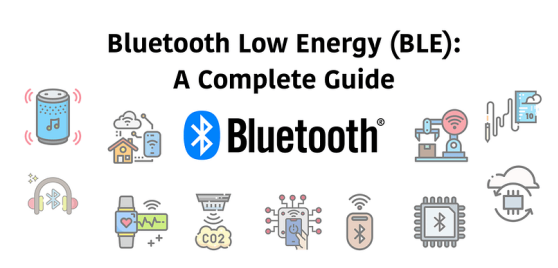Energy-Saving Technology and Realization Method of Bluetooth Low Energy ModuleAuthor:Abluetech Time:2023-11-08
In today's connected world, Bluetooth technology is increasingly used in a variety of devices. Bluetooth Low Energy (BLE) modules have become one of the standards for connecting iot devices. However, for those devices that rely on battery power, such as smartwatches, health monitors and smart home devices, energy efficiency is critical. This paper will discuss the energy-saving technology and implementation method of Bluetooth low energy module to meet the growing market demand for low power devices.

Energy Saving Technology and Realization Method
1. Low Power Design: Bluetooth low energy module from the design stage to focus on power consumption. Use low power processors, power management units, and optimized circuit layouts to minimize current consumption.
2. Power Level: BLE devices usually switch between different power levels to adapt to different usage scenarios. By choosing the right power level, battery life can be extended.
3. Deep Sleep Mode: Bluetooth low energy module can enter deep sleep mode to minimize power consumption when inactive. When the device is awakened, the module can be quickly restored to normal operation.
4. Data Transmission Optimization: The data transmission process using BLE can also be optimized. Adopt more efficient data compression algorithms and packet transmission strategies to reduce communication time and power consumption.
5. Minimal Use of Location Services: For devices that require location services, such as indoor navigation, minimizing the use of location services to reduce power consumption is key. Enable these features only when needed.
6. Intelligent Connection Management: Bluetooth low energy devices can reduce power consumption through intelligent connection management. This includes adjusting broadcast frequencies and connection intervals to dynamically manage connections based on the actual needs of the device.
7. Charging and Energy Harvesting: Provide regular charging opportunities for devices or use energy harvesting technologies, such as solar or motion energy, to reduce reliance on batteries.
8. Software Optimization: By writing efficient applications and using low-power apis, the power consumption of Bluetooth low energy devices can be reduced.
The energy-saving technology and implementation method of Bluetooth low energy module are the key to meet the growing demand of low power equipment market. Strategies such as low power design, power tier, deep sleep mode, data transmission optimization, minimal use of location services, intelligent connection management, charging and energy collection, and software optimization can effectively extend the battery life of devices and improve the user experience. Bluetooth low energy technology will continue to provide a reliable and efficient solution for connecting various iot devices, contributing to the development of the Internet of Things.